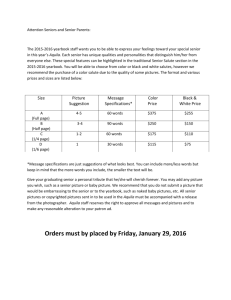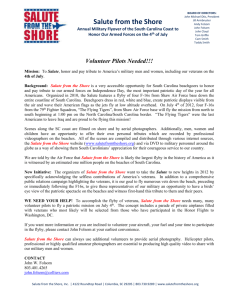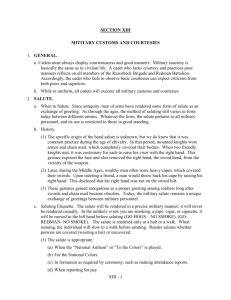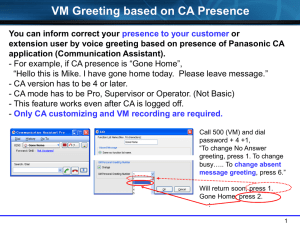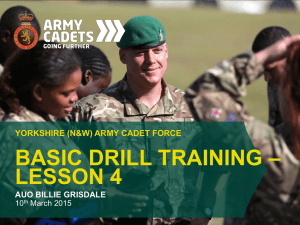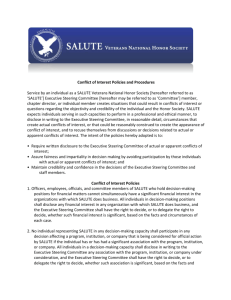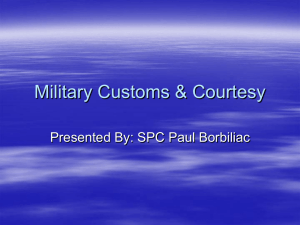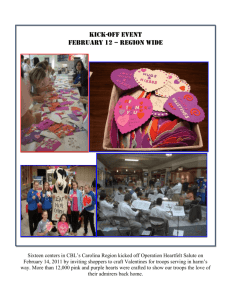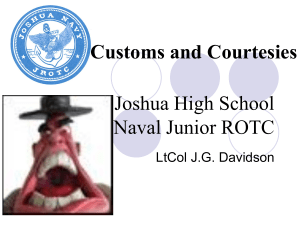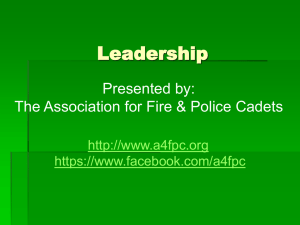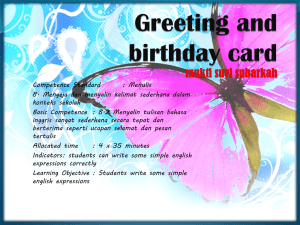Chapter 3 - Military Science Handbook
advertisement
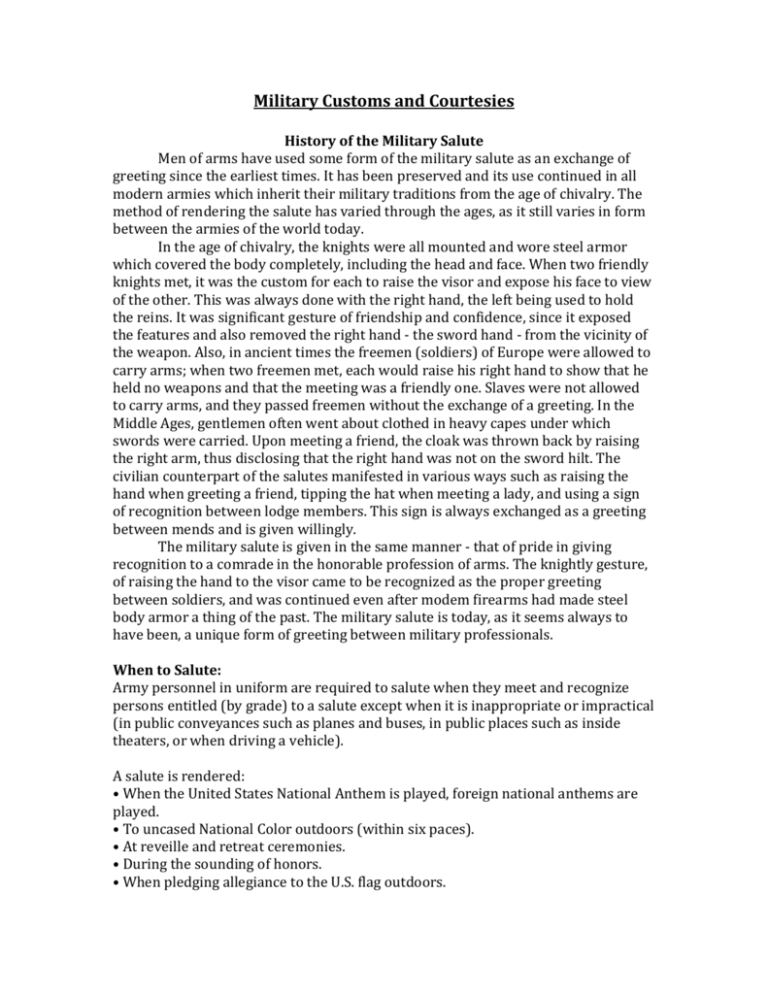
Military Customs and Courtesies History of the Military Salute Men of arms have used some form of the military salute as an exchange of greeting since the earliest times. It has been preserved and its use continued in all modern armies which inherit their military traditions from the age of chivalry. The method of rendering the salute has varied through the ages, as it still varies in form between the armies of the world today. In the age of chivalry, the knights were all mounted and wore steel armor which covered the body completely, including the head and face. When two friendly knights met, it was the custom for each to raise the visor and expose his face to view of the other. This was always done with the right hand, the left being used to hold the reins. It was significant gesture of friendship and confidence, since it exposed the features and also removed the right hand - the sword hand - from the vicinity of the weapon. Also, in ancient times the freemen (soldiers) of Europe were allowed to carry arms; when two freemen met, each would raise his right hand to show that he held no weapons and that the meeting was a friendly one. Slaves were not allowed to carry arms, and they passed freemen without the exchange of a greeting. In the Middle Ages, gentlemen often went about clothed in heavy capes under which swords were carried. Upon meeting a friend, the cloak was thrown back by raising the right arm, thus disclosing that the right hand was not on the sword hilt. The civilian counterpart of the salutes manifested in various ways such as raising the hand when greeting a friend, tipping the hat when meeting a lady, and using a sign of recognition between lodge members. This sign is always exchanged as a greeting between mends and is given willingly. The military salute is given in the same manner - that of pride in giving recognition to a comrade in the honorable profession of arms. The knightly gesture, of raising the hand to the visor came to be recognized as the proper greeting between soldiers, and was continued even after modem firearms had made steel body armor a thing of the past. The military salute is today, as it seems always to have been, a unique form of greeting between military professionals. When to Salute: Army personnel in uniform are required to salute when they meet and recognize persons entitled (by grade) to a salute except when it is inappropriate or impractical (in public conveyances such as planes and buses, in public places such as inside theaters, or when driving a vehicle). A salute is rendered: • When the United States National Anthem is played, foreign national anthems are played. • To uncased National Color outdoors (within six paces). • At reveille and retreat ceremonies. • During the sounding of honors. • When pledging allegiance to the U.S. flag outdoors. • When turning over control of formations. • When rendering reports. • To officers of friendly nations. • During "To the Color," "Hail to the Chief," or the raising or lowering of the flag. • When an officer approaches a uniformed group not in formation outside, the first cadet to recognize the officer will call "Attention" and all cadets will salute and remain at attention until given "At ease", "Rest", "Carry on", another command, or until the officer passes. • When in formation and an officer approaches, the person in charge calls the formation to attention and salutes. The other members of the formation do not salute. Salutes are not required: • Indoors, except when reporting to an officer or when on duty as a guard. • When saluting is obviously inappropriate (e.g., a person carrying articles with both hands or being otherwise so occupied as to make saluting impracticable). • When either the senior or the subordinate is wearing civilian clothes. * Salutes are not rendered at double-time. If you are at double-time and must salute, come to quick time (marching) and render the salute and appropriate greeting. Then return to double time. Addressing Officers, NCOs and Cadets: • All cadre and cadet officers are addressed as "Sir" or "Ma'am" or by their respective rank and last name. As a general rule, "Sir" or "Ma'am" is used in speaking either officially or socially to any senior. The word is repeated with each complete statement. "Yes" and ''No'' should always be accompanied with "Sir"/"Ma'am". A noncommissioned officer is always addressed as "Sergeant," "First Sergeant," or "Sergeant Major," as appropriate. • Two or more male officers are addressed as "Gentlemen"; two or more female officers are addressed as "Ladies"; and a mixed group should be addressed as "Ladies and Gentlemen." • Cadre will address all cadets either by appropriate cadet rank or simply as Mr. or Miss. Miss is used for married female cadets as well. Talking to Officers and NCOs: When speaking to an officer, cadets will stand at the position of attention until instructed otherwise by the officer. Likewise, when speaking to an NCO, cadets will maintain the position of parade rest until instructed otherwise. Position of Honor: Another ancient military custom dictates that you should always walk or sit to the left of your seniors. For centuries men fought with swords, and because most men are right handed, the heaviest fighting occurred on the right. The shield was on the left arm, and the left side became defensive. Men and units who preferred to carry the battle to the enemy, and who were proud of their fighting ability, considered the right of a battle line to a post of honor. Therefore, ensure a senior officer is located to your right when walking or sitting. He or she is filling the position of honor.
